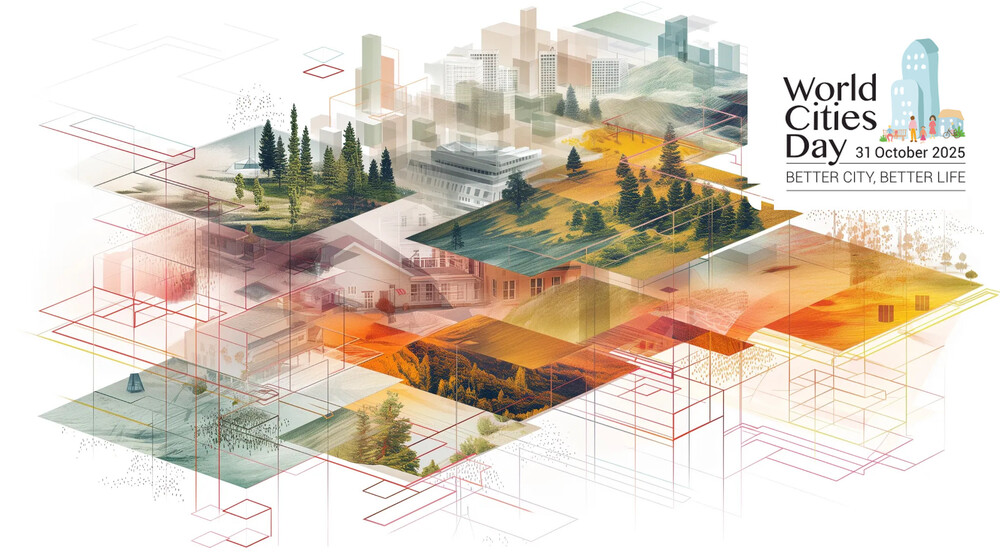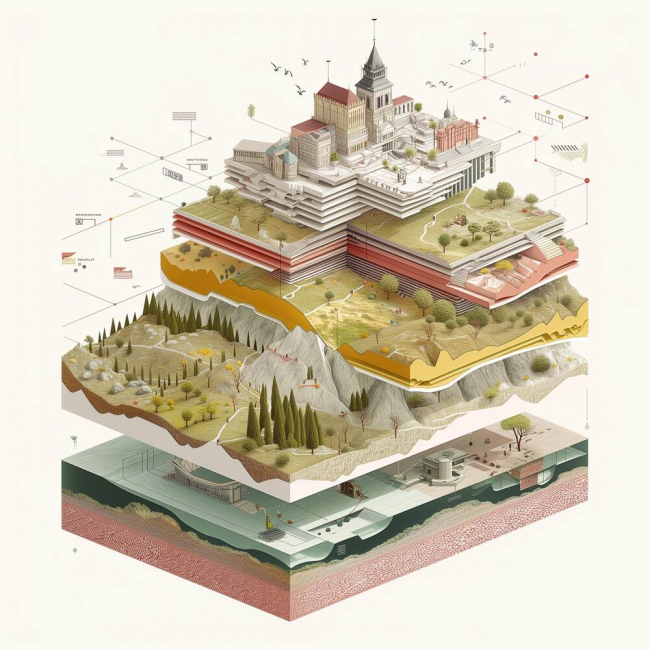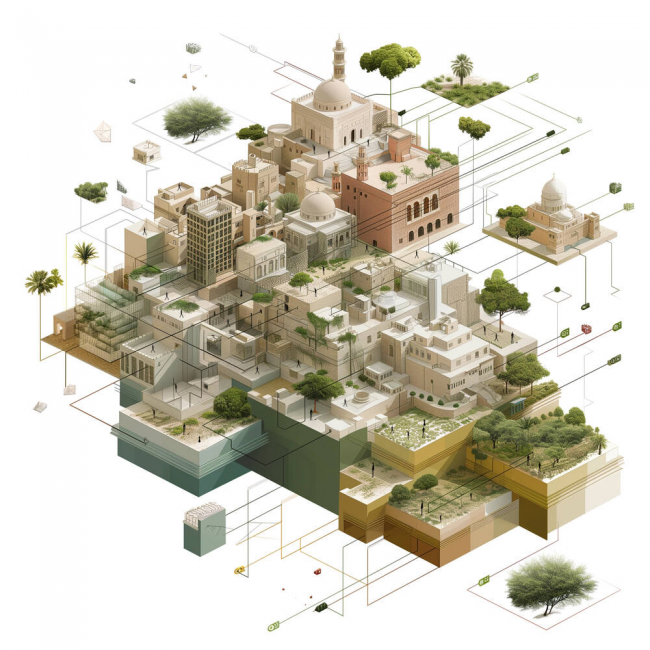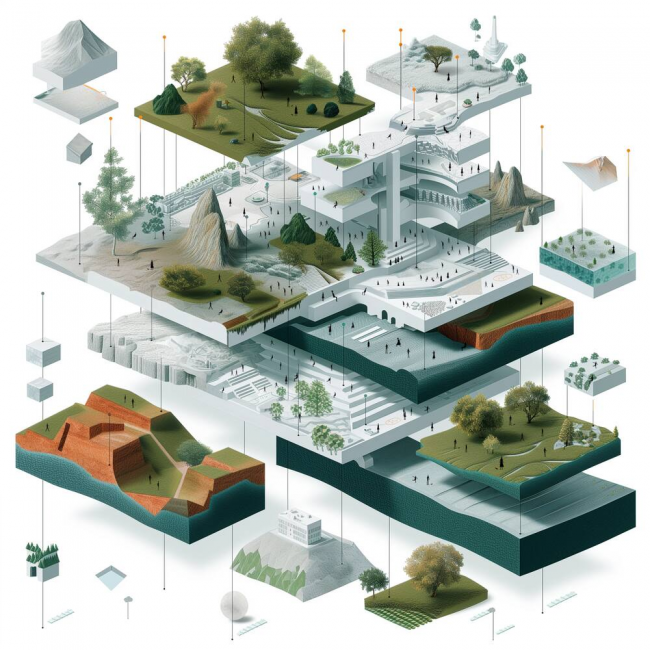| News | UNESCO Will Release New Cases of the Urban Heritage Atlas |
| PublishDate:2025-11-19 Hits:23 |

To mark World Cities Day 2025 and its theme “People-Centred Smart Cities,” the UNESCO World Heritage Cities Programme is releasing a new set of case studies on the UNESCO Urban Heritage Atlas. Building on last year’s launch, this edition expands the Atlas with examples from diverse regions and highlights how GIS and mobile data capture help site managers and local authorities to inventory, georeference, and map the multiple layers of heritage that define the distinctive character of their historic urban areas.
“On this World Cities Day 2025, World Heritage cities demonstrate that technological innovation can strengthen heritage preservation. Through tools such as the Urban Heritage Atlas, UNESCO advances sustainable cities and settlements where their invaluable heritage is an important resource for inclusion and resilience”
——Lazare Eloundou Assomo, Director of the World Heritage Centre
The Urban Heritage Atlas is a dynamic digital platform for implementing the 2011 Recommendation on the Historic Urban Landscape (HUL) that serves as an important tool for the management of urban sites under the UNESCO 1972 Convention Concerning the Protection of the World Cultural and Natural Heritage. The Urban Heritage Atlas supports cultural mapping, GIS-based spatial analysis of historic cities and settlements, is a repository for learning and education, a tool for capacity building and furthers participatory approaches to urban heritage management.
The World Heritage Centre is collaborating with several cities inscribed on the UNESCO World Heritage List, and new case studies will be published soon for the following sites:
As-Salt – The Place of Tolerance and Urban Hospitality (Jordan)
Historic Centre of Santa Ana de los Ríos de Cuenca (Ecuador)
Paris, Banks of the Seine (France)
The Seventeenth-Century Canal Ring of Amsterdam inside the Singelgracht (Netherlands)
Lamu Old Town (Kenya)
Historic Town of Grand-Bassam (Côte d’Ivoire)
Ancient City of Aleppo (Syrian Arab Republic)
Together, these examples show how people-centred smart city practice and heritage-driven innovation build resilient and inclusive urban futures. Explore the Atlas and the full set of case studies.
UNESCO Urban Heritage Atlas:
A tool for managing urban heritage
This is:
An atlas of the World's historic cities and settlements
A technical aid for implementing the 2011 HUL Recommendation
A platform for cultural mapping and urban heritage
A resource for education, capacity-building, and participation
An atlas
The Urban Heritage Atlas is an atlas and an archive that documents and explains, visually, narratively, and with analytical maps, the diversity and uniqueness of the world's historic cities and settlements. As such, it serves as a repository of city-building practices and new developments over time, as well as across the diverse regions of the world. This also includes vernacular architecture and traditional building techniques. While many collections and publications on World Heritage cities have been produced through the years, the diverse attributes and dimensions of World Heritage properties in urban contexts, and urban heritage in general, remain inadequately understood and threatened by a rapidly urbanising world. Urban heritage is often imagined as a collection of monuments and managed in an isolated way disconnected from holistic urban dynamics. This resource aims to fill this gap.
A technical aid The Urban Heritage Atlas is technical aid for the implementation of the 2011 UNESCO Recommendation on the Historic Urban Landscape (HUL Recommendation), an instrument that provides a framework and approach for integrating heritage conservation with urban development plans and processes. As it makes the different layers of heritage visible, it supports better management of the historic urban area, ensuring that new projects and interventions are compatible with its heritage values. The HUL Approach is a way of understanding urban heritage as part of a landscape or system composed of different elements and layers. It is not a category of cultural landscape nor a type of site. The Urban Heritage Atlas will be supported by the Managing Urban Heritage (currently under preparation), a resource manual, and a guide for the implementation of the HUL Recommendation.
A cultural mapping platform The Urban Heritage Atlas is also a cultural mapping platform that supports the identification and documentation of the distinctive character of the Historic Urban Landscape that has unique elements and features. For local (and national) authorities, this platform helps recognise what should be protected in a historic city or settlement and thus helps with better management of historic urban areas. It supports mapping the distinctive character of the Historic Urban Landscape that expresses the Outstanding Universal Value (OUV) of the World Heritage property at different scales. Cultural mapping is a methodology that makes visible the spatial relationships and built forms, cultural resources and practices, and national features that make historic cities and settlements distinctive and meaningful. It supports those cities and settlements that are a part of or have properties inscribed on the UNESCO World Heritage List, as well as all others not yet inscribed on the World Heritage List, including those on the national Tentative Lists (sites that may be eventually considered for nomination to the World Heritage List).
A learning resource Finally, the Urban Heritage Atlas advances the understanding and awareness of urban heritage as well as educates and builds capacities. It invites and enables the participation of all stakeholders to enable informed decision-making around conservation as well as new interventions and projects toward better management of urban heritage.
Source | UNESCO Official Website
Translated and Designed by | Li Qianrao (Intern)
Edited by | Liu Zhen
Reviewed by | Shao Yong |
|
|
- News | UNESCO Will Release New Cases of the Urban Heritage Atlas
- NEWS | WHITR-AP Participates in UN-Habitat Forum
- Preview | WH Properties Assessment: An Overview Across The World
- Preview | Heritage Educational Landscape Exhibition Opening Soon
- Preview|1st UHC-HEI International Conference to open in Shanghai
- Suzhou Gardens Conservation Practices Featured at UNESCO MONDIACULT 2025 Online Side Event — Chinese Wisdom Contributes Solutions for Global Cultural Sustainability
Copyright © 2009-2012 World Heritage Institute of Training and Research-Asia and Pacific (shanghai)






